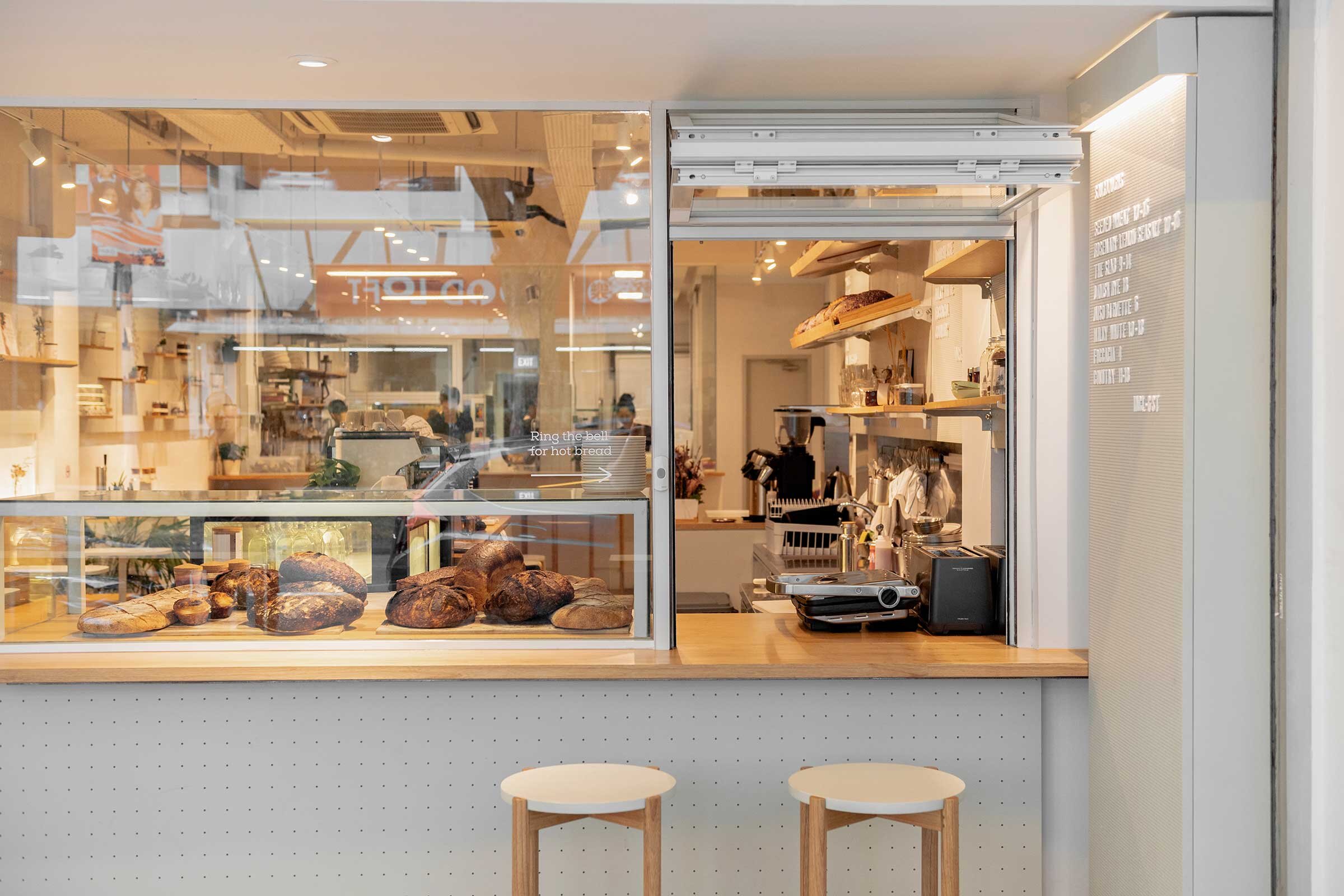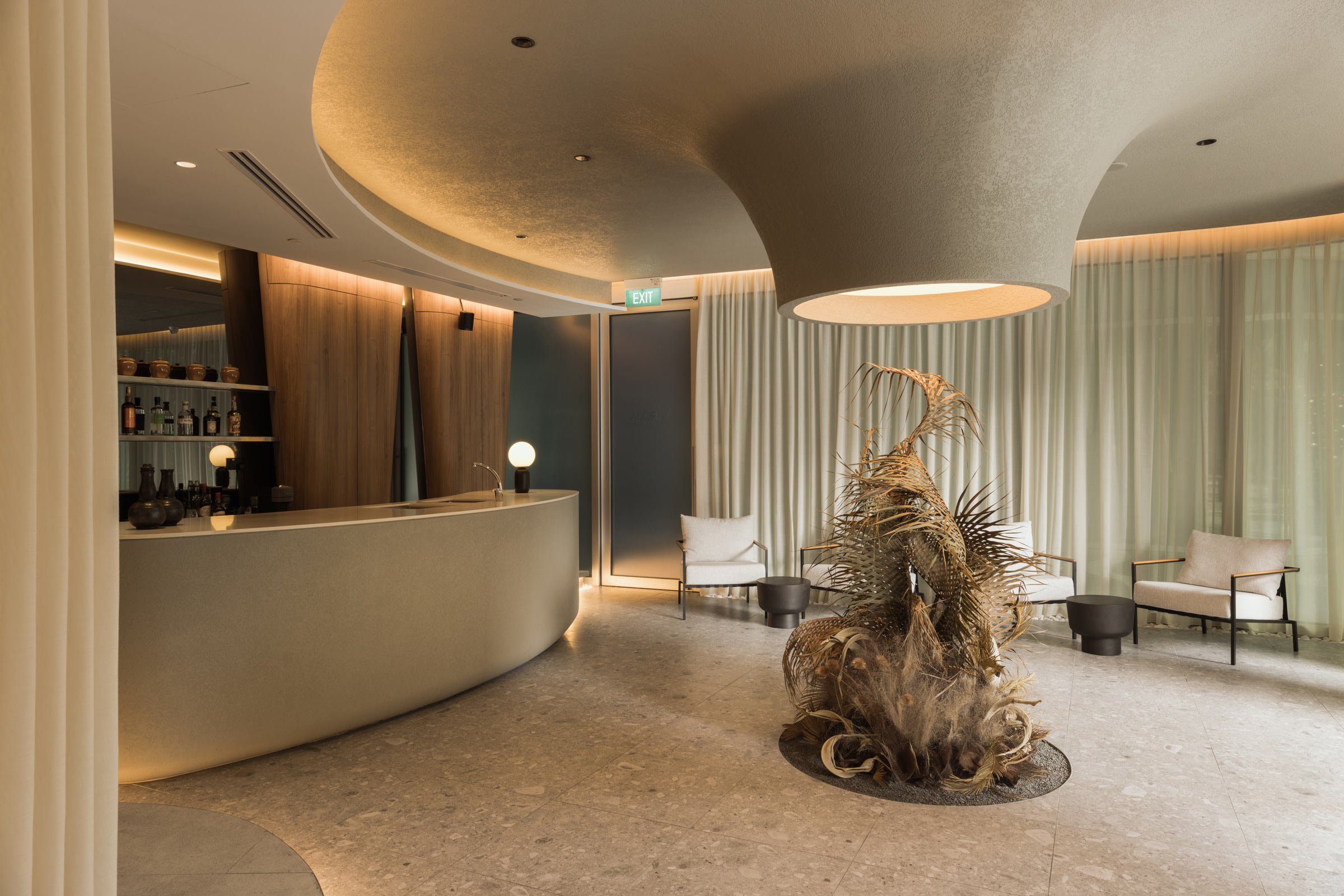Geylang Claypot Singapore’s New Look

A new location for a beloved restaurant provided Takenouchi Webb with a clean slate for a graphical new design. We spoke to director Marc Webb about the project
Design Anthology: How did you first meet the client?
Marc Webb: The client approached us, as he’d seen and liked some of our other projects in Singapore.
What’s unique about the building and the location?
When we first met the client, he took us to the existing outlet in the Geylang area of Singapore. It was a traditional coffee shop that had been established around 30 years ago in a pretty lively part of the city, and the client told us lots of stories about the more shady aspects of the area and neighbours. There had been no design to the shop, but it did have character and the food was amazing.
What was the brief?
Geylang Claypot Rice specialises in charcoal-cooked rice, which not many places do in Singapore any more. The client wanted to keep the new outlet in a shophouse, and settled on another shophouse building closer to the city centre. It was very important to him that the new outlet retain the character of the original. The brief was to maintain the coffee shop atmosphere while creating a more contemporary space; to develop something that would attract a new, younger crowd but also not intimidate the regular customers. The space was to be casual, bright and open.
How did you approach the project? What design references or narratives did you try to incorporate?
We looked closely at the existing coffee shop and at similar places in Singapore, and tried to identify the key elements that we liked through the material choices and furniture design. Another key element was the claypot cooking, which makes the product quite unique; we wanted to showcase this to the customers, so we have a partially open kitchen to view where the claypots are cooking.
Tell us about the material choices.
We eventually came up with a material palette that referenced traditional coffee shops, using predominantly terrazzo and tile. We updated the colour palette to be much brighter and to give a very graphical pop to the interior.
Did you create custom pieces?
We customised all the furniture, again taking our cue from the traditional coffee-shop aesthetic. Tables are a mix of solid surface and terrazzo. The stools are customised to be durable and stackable, and took reference from the traditional red stools often seen in coffee shops, but we fabricated them from solid wood that was then partially painted.
The customised strip lighting also took its influence from the more utilitarian lighting in coffee shops, and we also incorporated light-box menus on the walls. As a graphic element, we also added small painted boards, with items from the menu written in Chinese, which we’d also seen in some of the traditional coffee shops. The design took around three months and the fit-out around two months.
Are there any other details you’d like to share?
This was really a great project for us. It’s always a challenge to update an established outlet and not turn it into a pastiche of its past, and hopefully we achieved this. Geylang Claypot Rice is one of the places we consistently go back to - it’s always full, always noisy and always delicious!
As told to / Suzy Annetta
Images / Lina Meisen
















